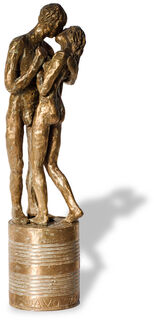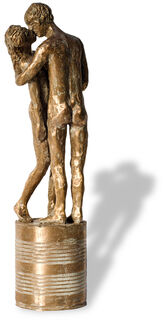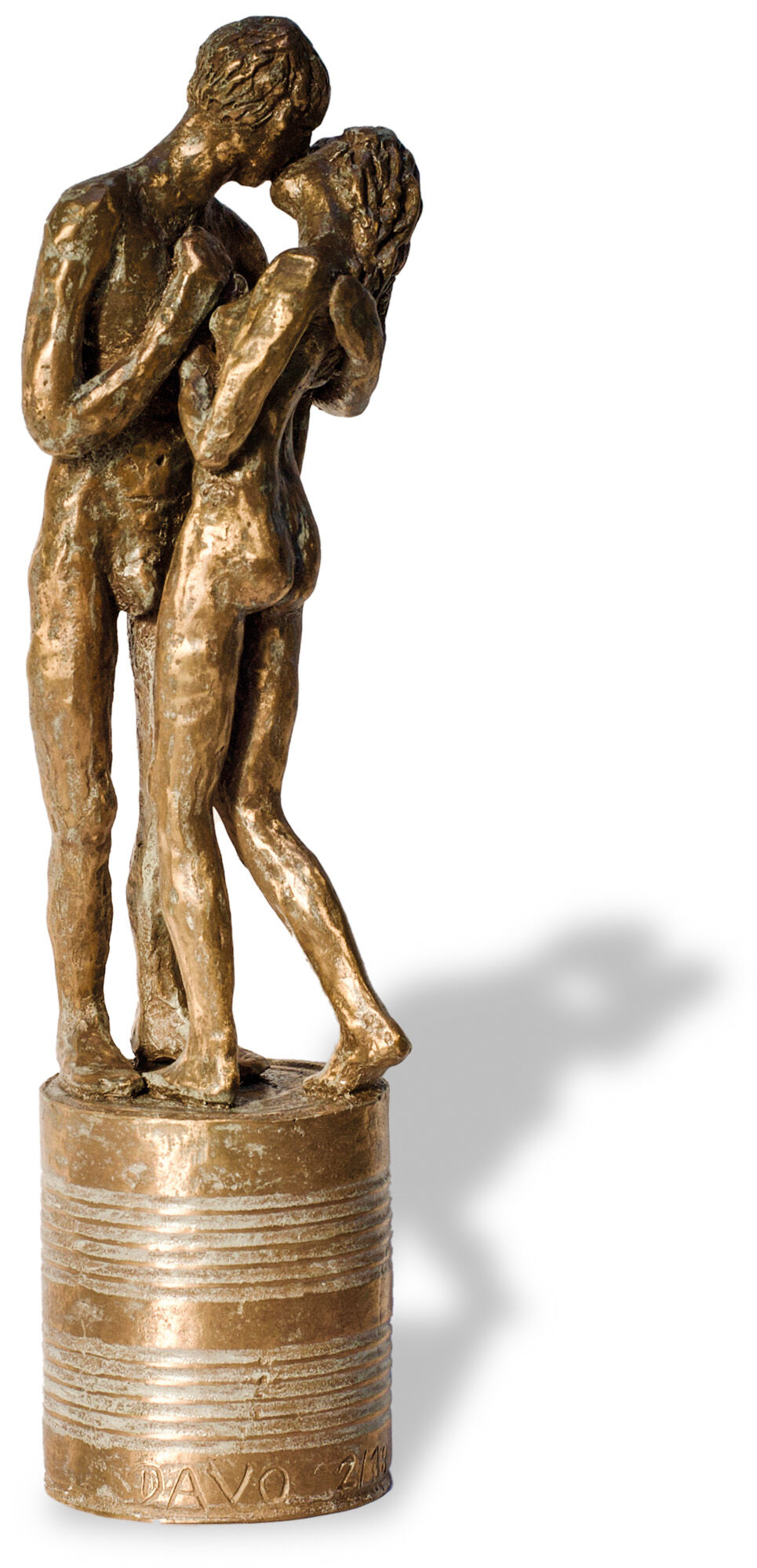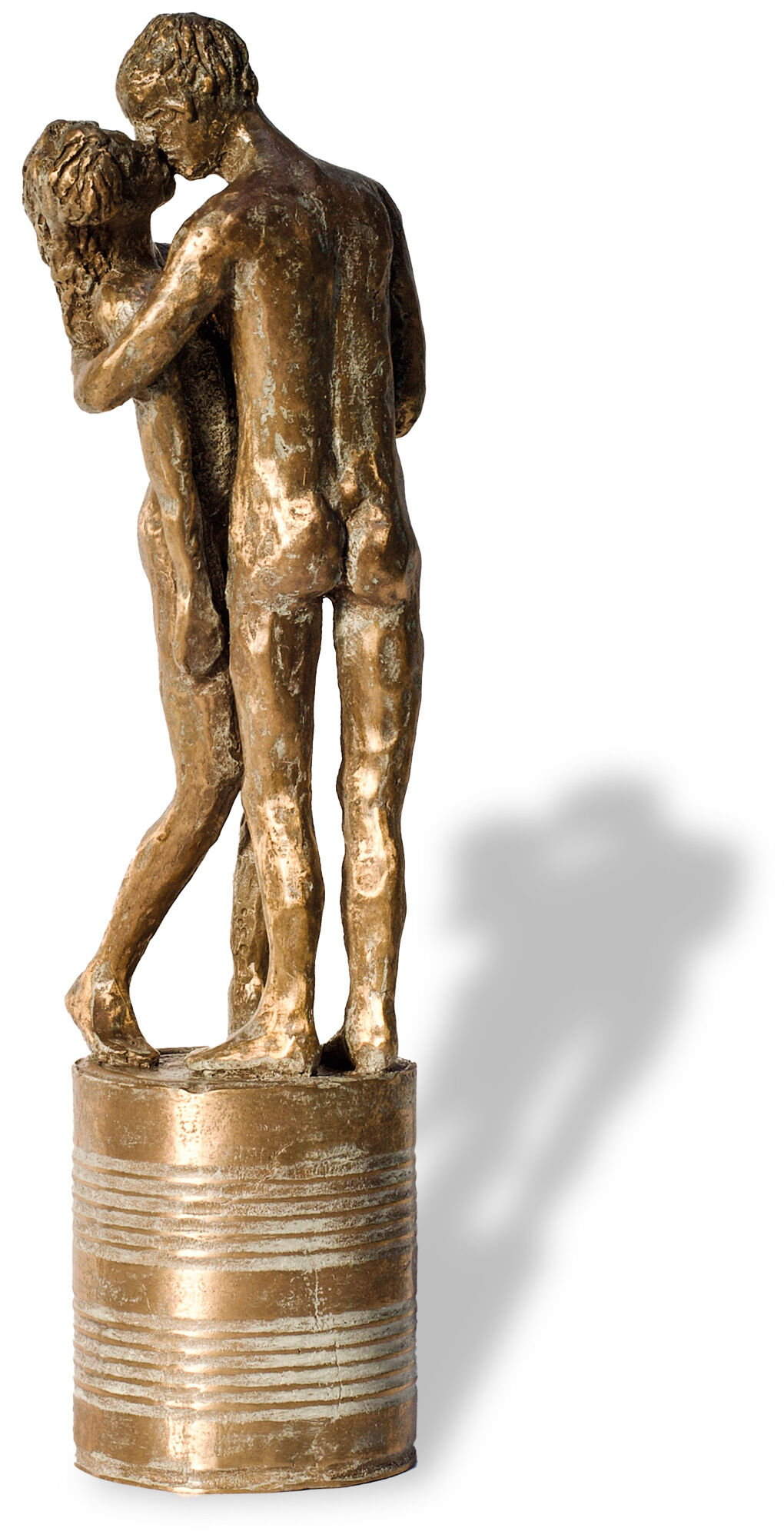Sculpture "Kiss me" (2022)
Sculpture "Kiss me" (2022)
Quick info
limited, 18 copies | numbered | signed | bronze | size 41 x 10 x 10 cm (h x w x d)
Detailed description
Sculpture "Kiss me" (2022)
Sculpture in bronze, 2022. Edition: 18 copies, numbered and signed. Height: 41 cm. Width: 10 cm. Depth: 10 cm.
About Dagmar Vogt
Characteristic for Dagmar Vogt's work is the fusion of abstraction and representationalism, with a thematic connection to the decay of nature. The artist, who was born near Cologne, Germany, in 1960, explores the borderline between anatomical and free sculptural representation with her paintings and sculptures.
In her relief-like and large-format paintings, she captures the atmosphere of nature with its mountains, lakes and plants: "The cycle of life- nature and its cycle is eternally new themes for me." The results are series such as "Blossoming and Withering" and "Blossoms by the River", which have a fairytale-like effect, and appear as moments from dreams - they are never clear and always blurred. The decay of the luminous blossoms seems to become visible in a single moment through the abstracted painting technique. Dagmar Vogt works with many gradations of a colour tone and makes several preliminary sketches.
The artist, who works and lives in Herdecke, Wuppertal and the Allgäu, completed her training in painting and sculpture under the great artists Markus Lüpertz and Mathias Lanfer, who was a master-class student of Tony Cragg. Her work is represented in galleries in Germany and New York.
In 2018, Dagmar Vogt won 1st prize at the Kitz Award in Kitzbühel for the category of sculptures.
An alloy of copper with other metals (especially with tin) used since ancient times.
When casting bronze, the artist usually applies the lost-wax technique which is dating back more than 5000 years. It's the best, but also the most complex method of producing sculptures.
First, the artist forms a model of his sculpture. It is embedded in a liquid silicone rubber mass. Once the material has solidified, the model is cut out. The liquid wax is poured into the negative mould. After cooling down, the wax cast is removed from the mould, provided with sprues and dipped into ceramic mass. The ceramic mass is hardened in a kiln, whereby the wax flows out (lost mould).
Now we finally have the negative form, into which the 1400° C hot molten bronze is poured. After the bronze had cooled down, the ceramic shell is broken off and the sculpture is revealed.
Now the sprues are removed, the surfaces are polished, patinated and numbered by the artist himself or, to his specifications, by a specialist. Thus, each casting becomes an original work.
For lower-quality bronze castings, the sand casting method is often used which, however, does not achieve the results of a more complex lost-wax technique in terms of surface characteristics and quality.
A plastic work of sculptural art made of wood, stone, ivory, bronze or other metals.
While sculptures from wood, ivory or stone are made directly from the block of material, in bronze casting a working model is prepared at first. Usually, it is made of clay or other easily mouldable materials.
The prime time of sculpture after the Greek and Roman antiquity was the Renaissance. Impressionism gave a new impulse to the sculptural arts. Contemporary artists such as Jorg Immendorf, Andora, and Markus Lupertz also enriched sculptures with outstanding works.






